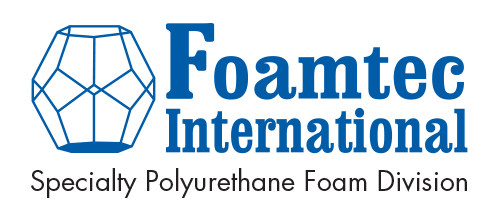Beyond Comfort: A Medical Necessity
For years, PU (Polyurethane) foam has been a go-to material in the wheelchair cushion industry. Its affordability, ease of manufacturing, and lightweight nature make it a popular choice among manufacturers and consumers. However, with the increasing need for more advanced solutions that provide both comfort and durability, it's time to revisit and redefine the use of PU foam in wheelchair cushions.
The Challenges with Current PU Foam Solutions
Shape Retention
Over time, many users find that PU foam cushions lose shape, compromising their support. This "flattening" effect can have negative implications on posture, lead to pressure sores, and increase patient pain.
Durability
While PU foam is often praised for being affordable, it also tends to degrade faster than other materials. The resulting wear and tear require frequent replacements, undermining its cost-effectiveness in the long run. With the degradation of the cushions, this means wheelchair users, on average, need to replace their cushions every 2-3 years, sometimes more than that, depending on the durability of the foam cushion.
Breathability
Standard PU foam does not always allow for optimal air circulation, leading to discomfort and potential skin issues due to trapped moisture.
Innovations in PU Foam: The Path Forward
Enhanced Quality PU Foam
New manufacturing techniques are producing PU foam that has better shape retention properties. This enhanced quality PU foam could offer a more durable solution without straying far from the existing material base.
Layering Techniques
Moving away from a monolithic, single-layer design, cushions could benefit significantly from a multi-layered approach that utilizes foams of varying densities and materials. Such layering would serve a dual purpose: offering a tailored balance of firm support and plush comfort that caters to extended use and substantially enhancing the cushion's ability to retain its shape over time. In the wheelchair-user community, the phenomenon of cushions "flattening" over time is a widespread issue that contributes to discomfort and can even lead to more severe problems like pressure sores. Implementing new layering techniques could counteract this issue. For instance, incorporating a layer of high-resilience foam could offer "bounce-back" capabilities, allowing the cushion to recover its original shape quickly after being compressed. This resilient layer could be combined with softer foams for comfort and memory foams for contouring, creating a multi-faceted cushion that addresses a range of needs. The strategic placement of these layers could also optimize weight distribution, reducing pressure points and further contributing to the cushion's overall durability.
Ventilated Design
Advancements in foam cutting technology can now create ventilated PU foam cushions. These designs allow for better air circulation, mitigating some of the breathability issues commonly associated with standard PU foam.
Infused Materials
Manufacturers are enhancing the foam's thermal conductivity by infusing PU foam with cooling agents such as gel beads or incorporating phase-changing materials, enabling it to dissipate heat more effectively. Some advanced versions even employ micro-perforations that allow for improved air circulation. This cooling technology provides a more comfortable experience for the user by regulating temperature and reducing the risk of heat-related discomfort or skin issues. As a result, wheelchair cushions made with cooling PU foam offer a superior level of comfort without compromising on support or durability. Foamtec International is committed to creating innovative solutions to advance PU foam technology further.
Reinforced Foam Structures
By integrating supportive elements like plastic or a solid foam core, PU foam cushions could achieve better longevity and offer more reliable postural support. Reinforcing foam structures would allow the seats to maintain their custom shapes for an individual’s body, ensuring that the cushion adapts to the user rather than the other way around. Not only would this reduce the frequency of cushion replacements, thereby making it more cost-effective in the long run, but it would also offer consistent support that can be critical for preventing postural issues and pressure sores. The integration of these supportive elements into PU foam would be particularly beneficial for individuals with specific medical conditions that require targeted support, such as spinal misalignment or pressure ulcer risks.
Industry Partnerships and Testing
Foamtec International values collaboration with our customers to ensure that our products align with their needs. Our foam production and processing capabilities help our customers attain optimal comfort and durability.

